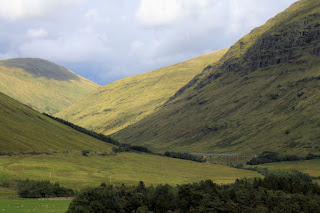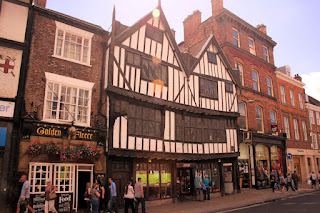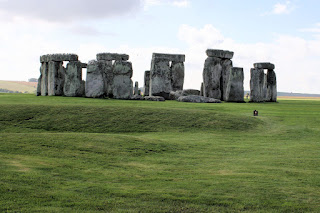We traveled around Great Britain and the Republic of Ireland mostly on country roads. That allowed us to see much of the country and the country side.
You could see the patch work on the hills. We saw many fields with wheat, corn, and many hay fields.
Almost all of our “country side” pictures were taken from inside the motor coach doing between 45-60 miles an hour. So, you’ll see some of the pictures are a little blurry on the bottom or have an overall blur from the bus movement.
Further, the weather was simply great during the whole trip. Our tour guide continued to mention that for a normal tour, it should be raining or very misty. Therefore, you will see reflections from the windows in many of the pictures. We did try to eliminate the blurriness and reflections as best we could.
Here you can see the reflection in the window as we look up a hill filled with heather just coming in bloom.
I'm going to place pictures in the blog without much comment, unless there is a specific site where something happened.
Here is Carmen at one of the overlooks we stopped to view the country side. This was a river overlook.
This morning the water at this river crossing was absolutely calm. The reflection in the water, fantastic. You can see part of the bridge in the bottom right had corner. This picture would have been perfect if not for the window reflection on the left side, oh well.
Notice the bridge in the bottom left corner.
This was a stronghold in Scotland that was taken over by the British. Called Corgaff Castle, has history dating back to the early 1550's. In 1748, the castle was converted to barracks.
Early morning fog and mirror lake, Scotland.
You can clearly see the heather and the sections cleared where it was harvested. There were similar locations where the ground was cut to harvest the peat in the bogs.
One of the few mornings that was foggy.


























































